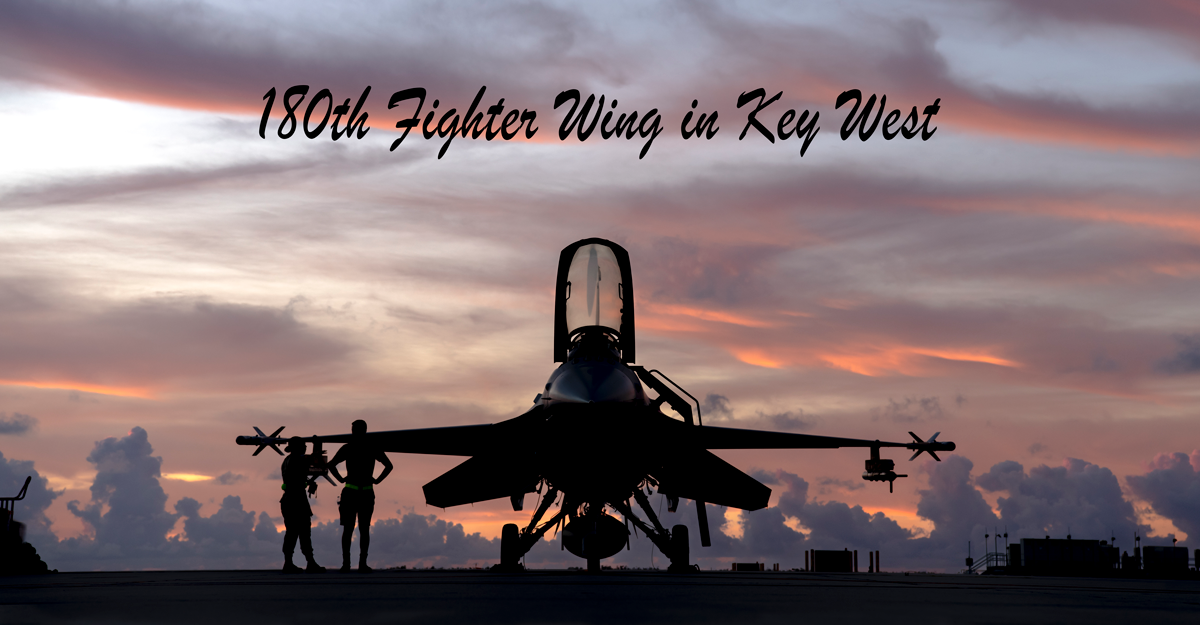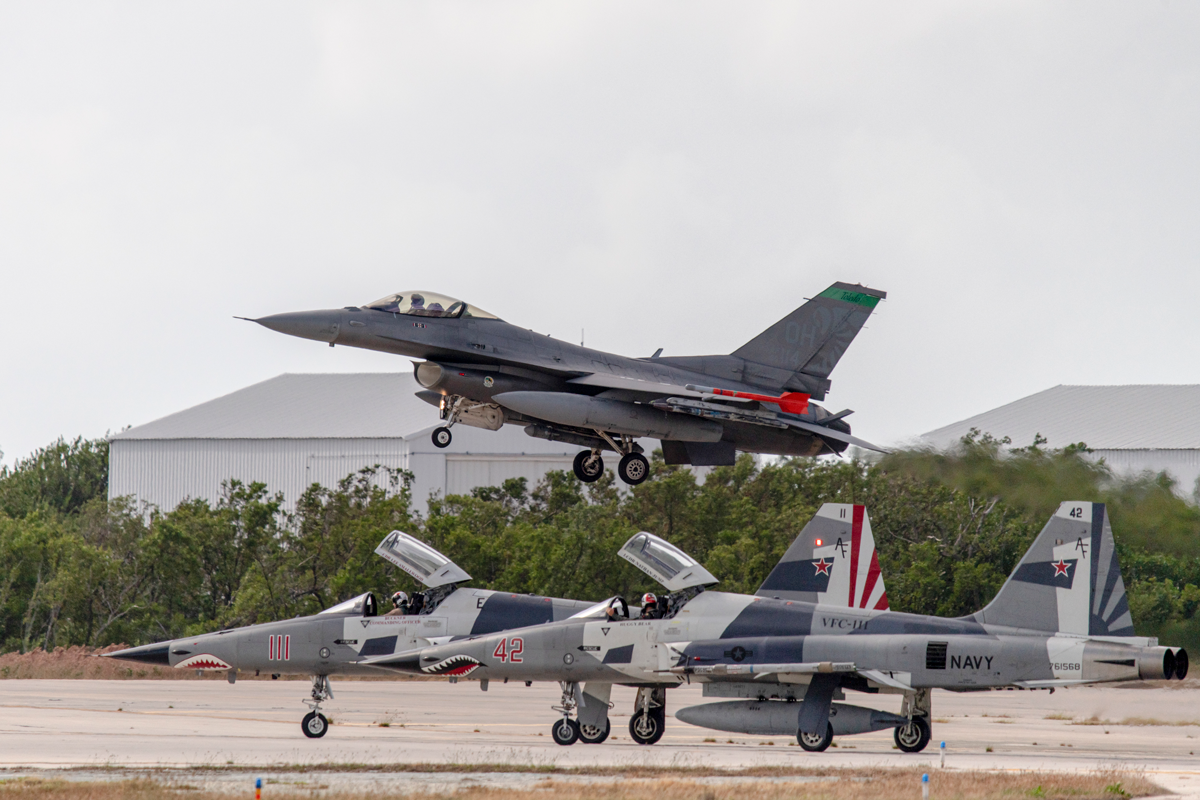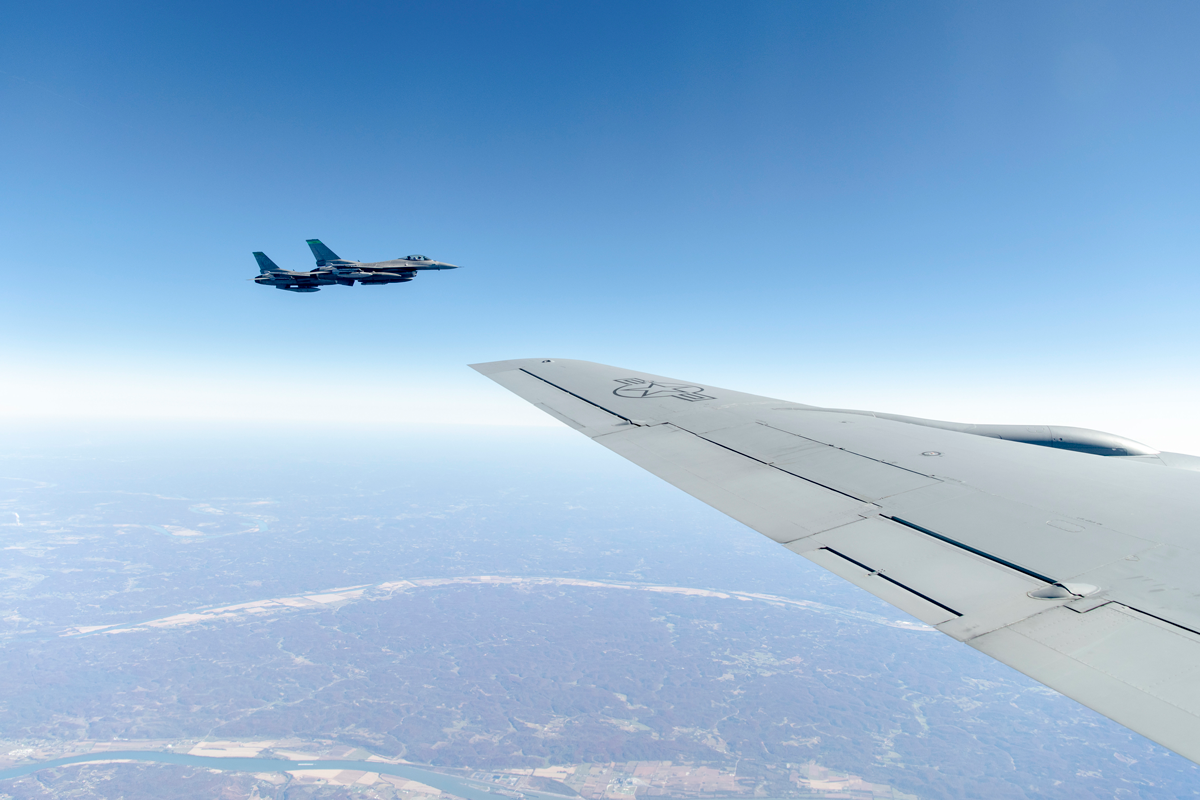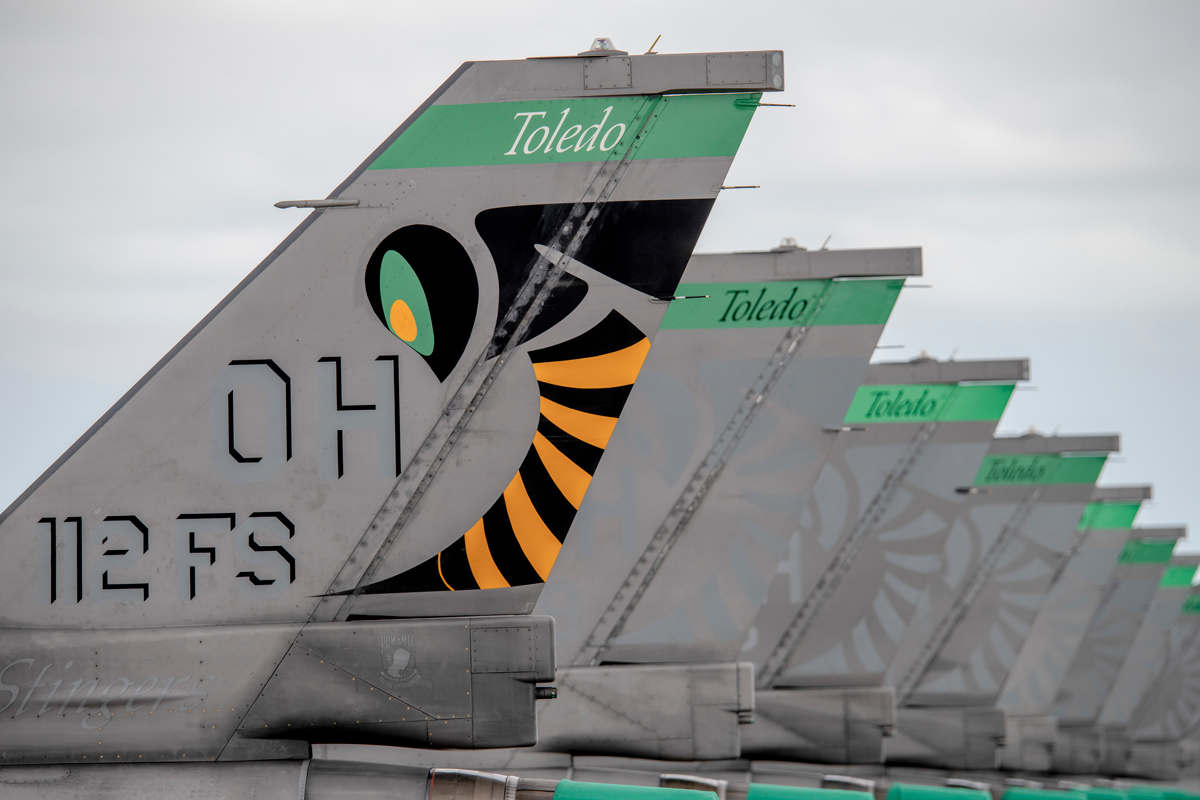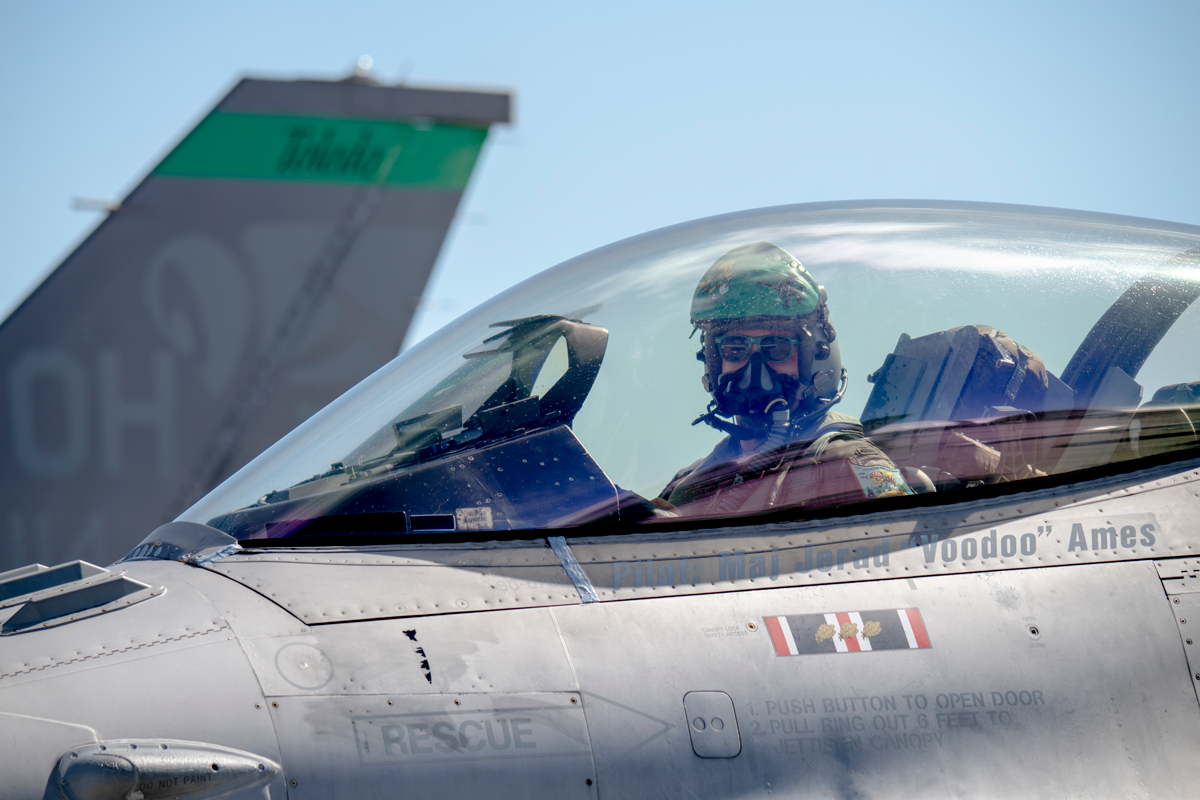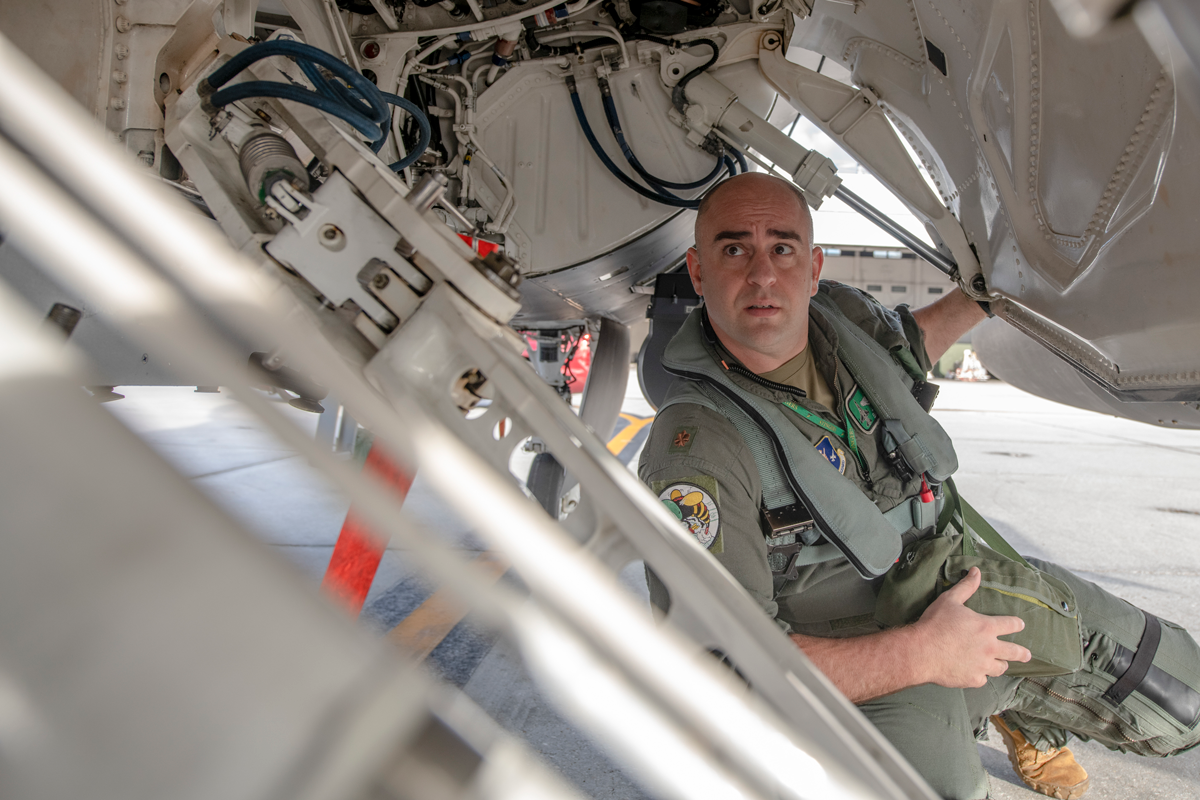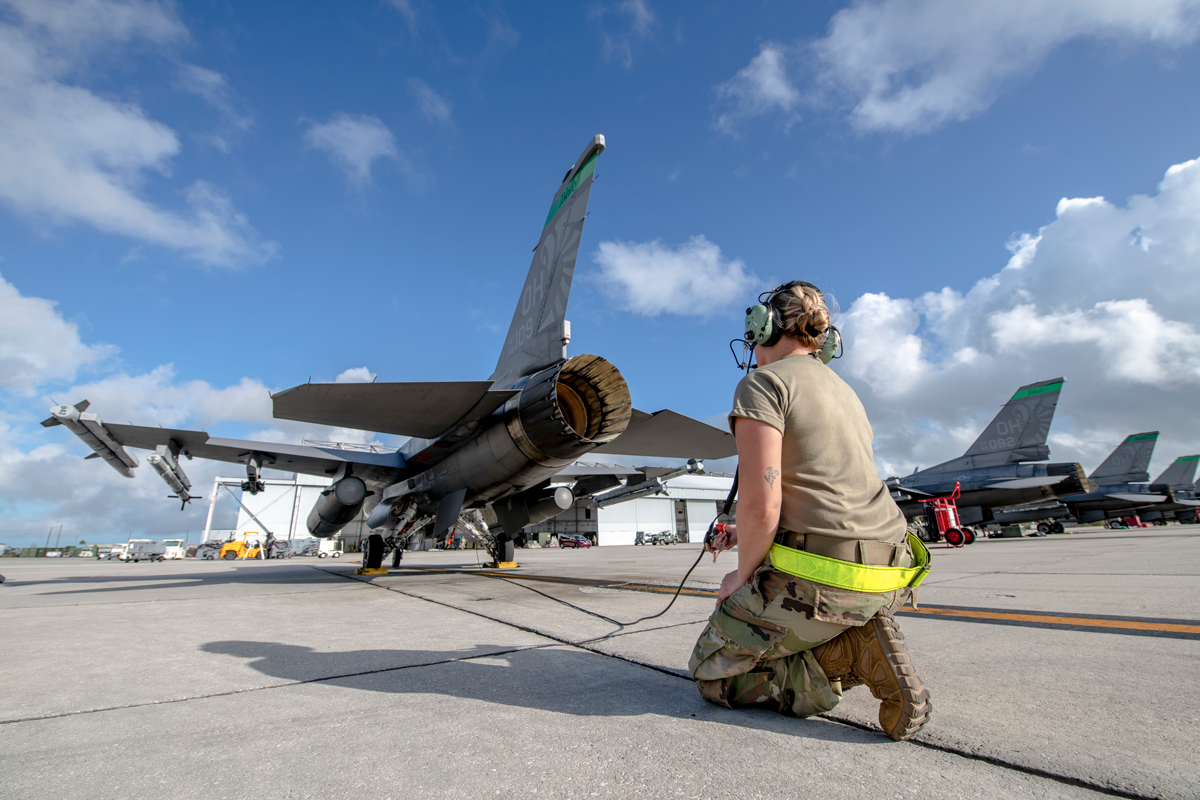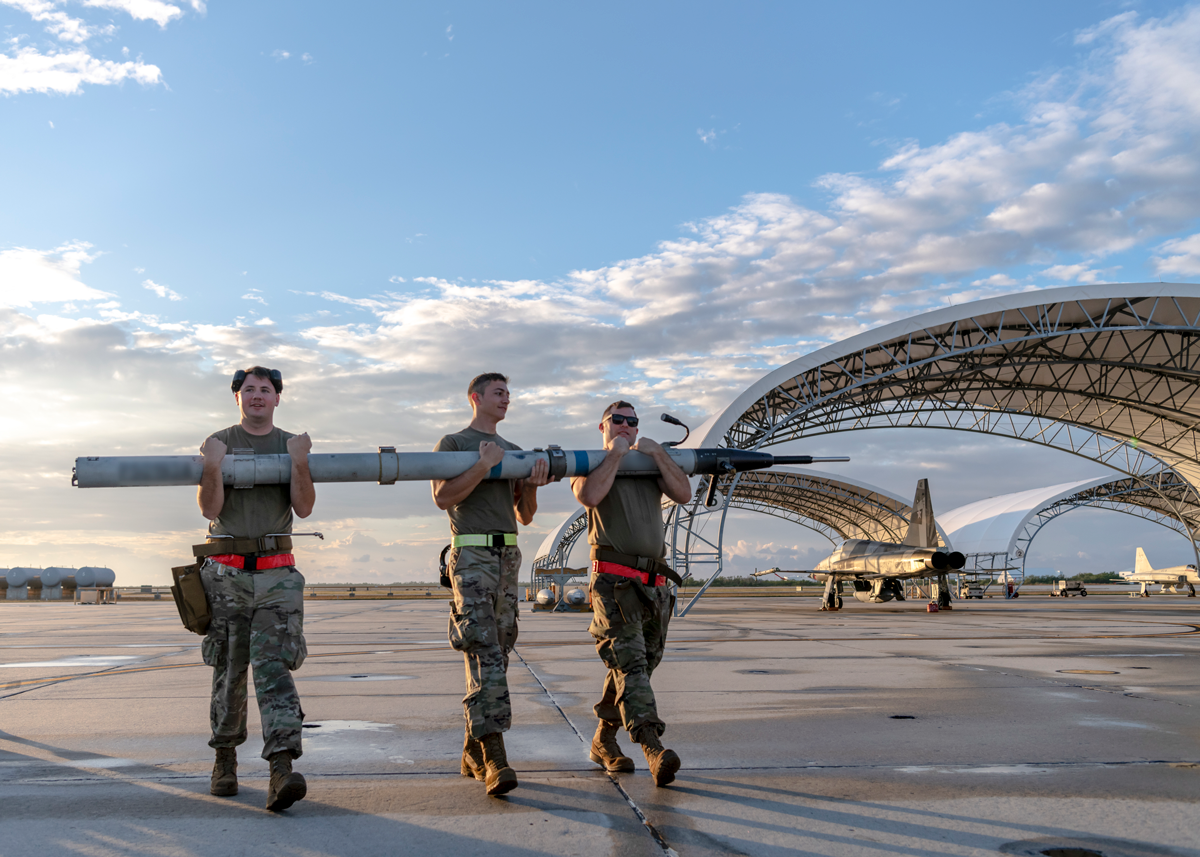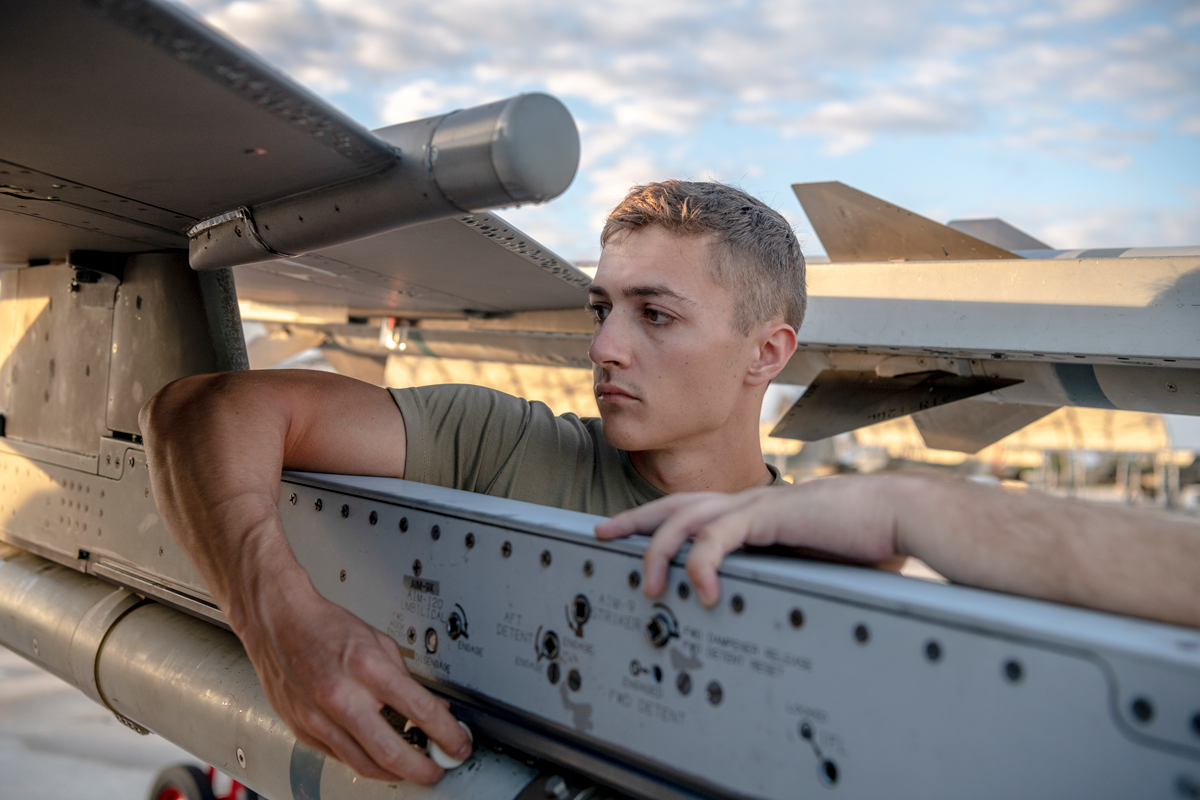By Staff Sgt. Kregg York, 180th Fighter Wing Public Affairs
KEY WEST, Fla. (11/14/22)
About 150 Airmen and 10 F-16 Fighting Falcons from the Ohio Air National Guard’s 180th Fighter Wing traveled to Naval Air Station Key West in late October to train with the Navy’s Fighter Squadron Composite (VFC) 111, nicknamed the “Sun Downers.”
Key West is a popular vacation spot. With consistently great weather and vast ocean space, it’s a great spot to relax. Those same things that draw tourists also make it a great place for military aviation operations.
“Besides just being in a sunny place in November, the airspace out here is unlike the airspace we have back home,” said Maj. Jake Laginess, an F-16 fighter pilot with the 180th FW and project officer for the training mission. “It’s a lot closer to where we’re operating out of, it’s a lot bigger and there’s fewer restrictions, so it allows us to fly closer to how we would in combat.”
While at Key West, the 180th FW Airmen made the most out of their training by accomplishing two different training objectives simultaneously.
While at Key West, the 180th FW Airmen made the most out of their training by accomplishing two different training objectives simultaneously.
“We (worked) with another F-16 unit, out of Homestead Air Force Base (Florida), and … also (flew) with dissimilar F-5s,” Laginess said.
The F-5N Tiger IIs that the 180th FW trained with are operated by VFC-111, which operates as part of the Navy Reserves fleet adversary program, providing dissimilar air combat training to Navy fleet strike fighter and Marine fighter attack squadrons, as well as Air Force, Air Force Reserve and Air National Guard fighter squadrons.
“We simulate the bad guys, day in and day out,” said Cmdr. Lee Smallwood of VFC-111, which assesses current adversary tactics and replicates them for U.S. military fighter pilots to exercise combat maneuvers that they would use against an actual enemy.
“One distinctive advantage we have is that we are pretty well-versed in what the good guy tactics and capabilities are,” Smallwood said. “So if they want us to be as difficult as possible, we can tailor our presentations to try to make it as difficult as possible for the good guys, since we know what they’re going to do, and we can build our reactions to preempt some of those.”
According to Cmdr. Matt Gibson, another member of the VFC-111 leadership team, the F-5 pilots can replicate maneuvers and tactics of different types of adversary aircraft, giving U.S. fighter exposure to what they might encounter in a real-world situation.
“The F-5s are not as capable of an aircraft as the F-16,” Laginess said. “But those guys are really good at what they do, as far as being adversaries. They’ve really learned what the threat out there does and what they’re like, so they’re good at it.”
Facing these experienced fighter pilots isn’t the only challenging thing about going up against the VFC-111. According to Laginess, who’s also a former Navy pilot, one of the biggest challenges lies in the differences between the services.
“The biggest challenge is actually going back to fly with a Navy unit,” Laginess said. “When we’re flying with them, we just speak different languages. We do the same job; we’re just using different words to get there. So, the challenge is trying to translate between the two and figure out what each of us means.”
Training with the VFC-111 provides exposure to operating with the Navy. If we (the U.S.) were ever to have a big war with a near peer, we’re going to have Navy and other assets out there, so it’s nice to get out of our bubble and learn to interact and integrate with other units.”
Despite the cross-service language barrier, the 180th FW was still able to successfully accomplish its mission and validate its readiness to protect the homeland and conduct contingency operations around the world.
“They are absolutely professional in the air and on the ground,” said Gibson, when asked about working with the 180th FW pilots, “absolutely professional.”
But it takes more than pilots for the 180th FW to accomplish its mission. Pilots mainly concern themselves with operating their aircraft, so ensuring their equipment is fully mission-capable falls on the wing’s maintainers.
“From a maintenance perspective, our goal (for the mission was) to provide combat-ready aircraft for the training that the pilots need(ed) to be doing up there,” said Maj. Jason Logsdon, 180th FW maintenance officer in charge during the Key West training. “It doesn’t matter how much you prepare and plan, there’ll always be some hiccups that happen, and we just work through those.”
Through the combined efforts of the pilots in the air and the Airmen providing maintenance and other support on the ground, the 180th FW was able to fly 128 sorties, totaling more than 170 flying hours, which enhanced the mission capabilities and readiness of all the wing’s personnel who took part in the training.
